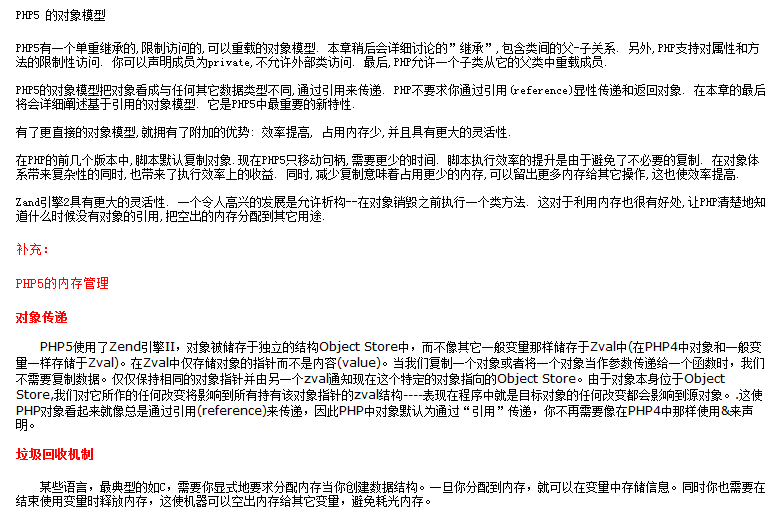php使用pdo扩展连接postgresql对象关系数据库

PHP5学习对象教程由美国人古曼兹、贝肯、瑞桑斯编著,简张桂翻译,电子工业出版社于2007年12月1日出版的关于PHP5应用程序的技术类图书。该书全面介绍了PHP 5中的新功能、编程方法及设计模式,还分析阐述了PHP 5中新的数据库连接处理、错误处理和XML处理等机制,帮助读者系统了解、熟练掌握和高效应用PHP。
 291
291

$pdo = NULL;
if(<strong>version_compare</strong>(PHP_VERSION, '5.3.6', '<')){
$pdo = new \PDO('pgsql:host=127.0.0.1;port=5432;dbname=postgredb1','postgres',"123456",array(\PDO::MYSQL_ATTR_INIT_COMMAND=>'SET NAMES \'UTF8\'' ));
}
else{
$pdo = new \PDO('pgsql:host=127.0.0.1;port=5432;dbname=postgredb1','postgres',"123456");
}
try {
$pdo->beginTransaction();
$tableName = 'user';
if($fetch = true){
$myPDOStatement = $pdo->prepare("SELECT * FROM " . $tableName . " WHERE id=:id ");
if(!$myPDOStatement) {
$errorInfo = $myPDOStatement->errorInfo();
throw new \<strong>Exception</strong>($errorInfo[0].'###'.$errorInfo[1].'###'.$errorInfo[2]);
}
$id = 1;
$myPDOStatement->bindParam(":id",$id);
$myPDOStatement->execute();
if($myPDOStatement->errorCode()>0){
$errorInfo = $myPDOStatement->errorInfo();
throw new \<strong>Exception</strong>($errorInfo[0].'###'.$errorInfo[1].'###'.$errorInfo[2]);
}
$item = $myPDOStatement->fetch();
print_r($item);
}
$insertedId = 0;
if($insert = true){
$myPDOStatement = $pdo->prepare("INSERT INTO " . $tableName . "(username,password,status) VALUES(:username,:password,:status)");
if(!$myPDOStatement) {
$errorInfo = $myPDOStatement->errorInfo();
throw new \<strong>Exception</strong>($errorInfo[0].'###'.$errorInfo[1].'###'.$errorInfo[2]);
}
$timestamp = time();
$data = array(
'username' =>'usernamex',
'password' =>'passwordx',
'status' =>'1',
);
$myPDOStatement->bindParam(":username",$data['username']);
$myPDOStatement->bindParam(":password",$data['password']);
$myPDOStatement->bindParam(":status",$data['status']);
$myPDOStatement->execute();
if($myPDOStatement->errorCode()>0){
$errorInfo = $myPDOStatement->errorInfo();
throw new \<strong>Exception</strong>($errorInfo[0].'###'.$errorInfo[1].'###'.$errorInfo[2]);
}
$affectRowCount = $myPDOStatement->rowCount();
if($affectRowCount>0){
$insertedId = $pdo->lastInsertId();
}
print_r('$insertedId = '.$insertedId);//PostgreSQL不支持
print_r('$affectRowCount = '.$affectRowCount);
}
if($update = true){
$myPDOStatement = $pdo->prepare("UPDATE " . $tableName . " SET username=:username, status=:status WHERE id=:id");
if(!$myPDOStatement) {
$errorInfo = $myPDOStatement->errorInfo();
throw new \<strong>Exception</strong>($errorInfo[0].'###'.$errorInfo[1].'###'.$errorInfo[2]);
}
$id = 1;
$username = 'username update';
$status = 0;
$myPDOStatement->bindParam(":id",$id);
$myPDOStatement->bindParam(":username",$username);
$myPDOStatement->bindParam(":status",$status);
$myPDOStatement->execute();
if($myPDOStatement->errorCode()>0){
$errorInfo = $myPDOStatement->errorInfo();
throw new \<strong>Exception</strong>($errorInfo[0].'###'.$errorInfo[1].'###'.$errorInfo[2]);
}
$affectRowCount = $myPDOStatement->rowCount();
print_r('$affectRowCount = '.$affectRowCount);
}
if($fetchAll = true){
$myPDOStatement = $pdo->prepare("SELECT * FROM " . $tableName ." WHERE id > :id");
if(!$myPDOStatement) {
$errorInfo = $myPDOStatement->errorInfo();
throw new \<strong>Exception</strong>($errorInfo[0].'###'.$errorInfo[1].'###'.$errorInfo[2]);
}
$id = 0;
$myPDOStatement->bindParam(":id",$id);
$myPDOStatement->execute();
if($myPDOStatement->errorCode()>0){
$errorInfo = $myPDOStatement->errorInfo();
throw new \<strong>Exception</strong>($errorInfo[0].'###'.$errorInfo[1].'###'.$errorInfo[2]);
}
$list = $myPDOStatement->fetchAll();
print_r($list);
}
if($update = true){
$myPDOStatement = $pdo->prepare("DELETE FROM " . $tableName . " WHERE id=:id");
if(!$myPDOStatement) {
$errorInfo = $myPDOStatement->errorInfo();
throw new \<strong>Exception</strong>($errorInfo[0].'###'.$errorInfo[1].'###'.$errorInfo[2]);
}
//$insertedId = 10;
$myPDOStatement->bindParam(":id",$insertedId);
$myPDOStatement->execute();
if($myPDOStatement->errorCode()>0){
$errorInfo = $myPDOStatement->errorInfo();
throw new \<strong>Exception</strong>($errorInfo[0].'###'.$errorInfo[1].'###'.$errorInfo[2]);
}
$affectRowCount = $myPDOStatement->rowCount();
print_r('$affectRowCount = '.$affectRowCount);
}
$pdo->commit();
} catch (\<strong>Exception</strong> $e) {
$pdo->rollBack();
// print_r($e);
}
$pdo = null;以上就介绍了php使用pdo扩展连接postgresql对象关系数据库,包括了version_compare,Exception方面的内容,希望对PHP教程有兴趣的朋友有所帮助。

PHP怎么学习?PHP怎么入门?PHP在哪学?PHP怎么学才快?不用担心,这里为大家提供了PHP速学教程(入门到精通),有需要的小伙伴保存下载就能学习啦!

Copyright 2014-2025 https://www.php.cn/ All Rights Reserved | php.cn | 湘ICP备2023035733号